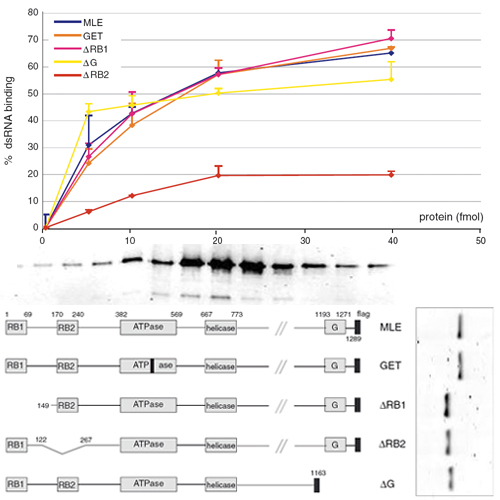Structure-function analysis of the RNA helicase maleless
17-Dec-2007
Nucleic Acids Research, 2008, 36 No. 3, 950-62 published on 17.12.2007
Nucleic Acids Research, online article
Nucleic Acids Research, online article
Loss of function of the RNA helicase maleless (MLE) in Drosophila melanogaster leads to male-specific lethality due to a failure of X chromosome dosage compensation. MLE is presumably involved in incorporating the non-coding roX RNA into the dosage compensation complex (DCC), which is an essential but poorly understood requirement for faithful targeting of the complex to the X chromosome. Sequence comparison predicts several RNA-binding domains in MLE but their properties have not been experimentally verified. We evaluated the RNA-binding characteristics of these conserved motifs and their contributions to RNA-stimulated ATPase activity, to helicase activity, as well as to the targeting of MLE to the nucleus and to the X chromosome territory. We find that RB2 is the dominant, conditional RNA-binding module, which is indispensable for ATPase and helicase activity whereas the N-terminal RB1 motif does not bind RNA, but is involved in targeting MLE to the X chromosome. The C-terminal domain containing a glycine-rich heptad repeat adds potential dimerization and RNA-binding surfaces which are not required for helicase activity.











